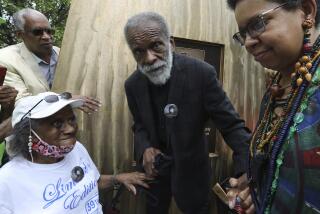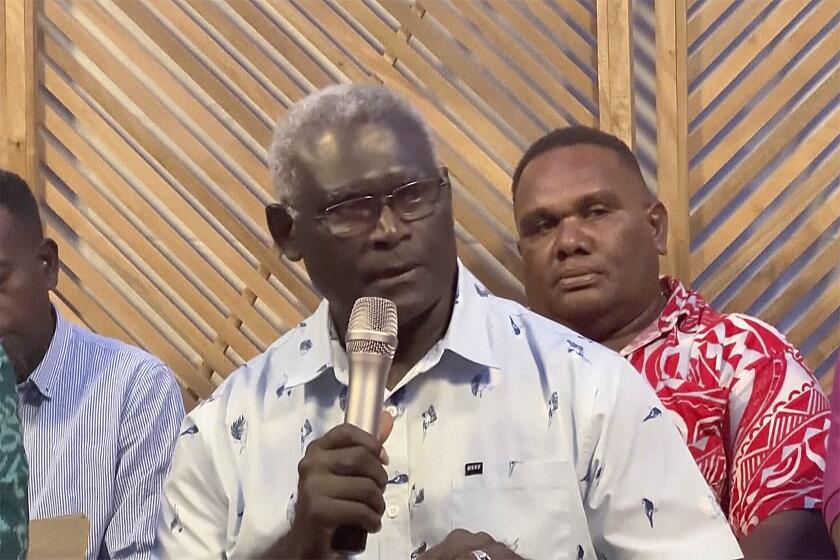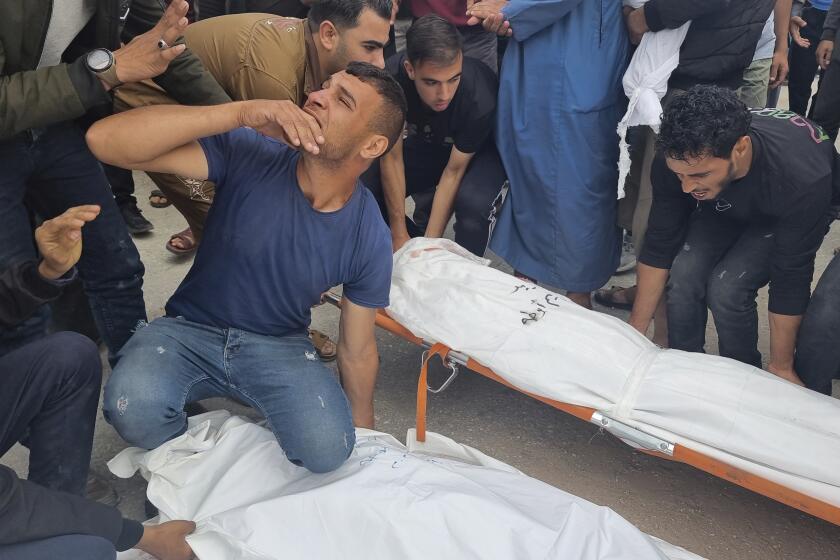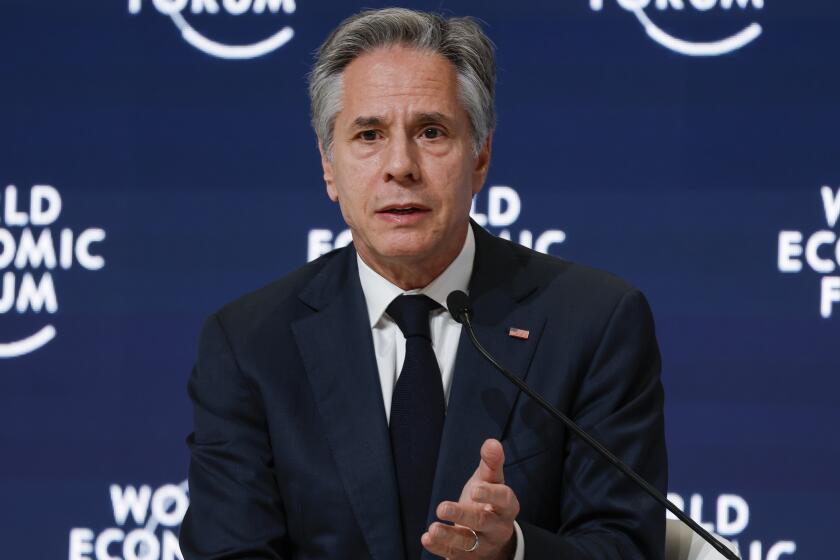Revolutionary art gives expression to Egyptians’ hopes
The news was only a couple of hours old and already the art of the revolution was being replaced with the art of the resignation.
For a week on the edge of Tahrir Square, the fledgling League of the Revolution’s Artists had churned out drawings and caricatures, poems and plays inspired by Hosni Mubarak’s 30 years of autocratic rule. A selection of the works were plastered on the outdoor glass wall of a KFC restaurant outside which they had set up base.
President Hosni Mubarak stealing money. Mubarak deaf to the people’s demands. Mubarak bowing to foreigners.
Now, in the din of the victory’s aftermath — as a chain of young men protected the boundaries of the league’s space — the artists huddled on the dingy ground in one of the few spaces left in the square with enough room to move a marker and created anew.
Now Mubarak was being chased out of the country by Lady Egypt and the Sphinx. And in another, broken handcuffs over a backdrop of a rising sun. And then simply, “God is great.”
“We accomplished the biggest uprising in the world in 18 days,” said Zaky Khelfa, one of the founders of the impromptu arts group. “And how did it happen? With art and blood. We drew the ideas of the people.”
Since the protests began Jan. 25, art of all types served as an outlet in Tahrir Square, expressing the anger, frustration and resentment of the Egyptian people in ways that went beyond slogans and speeches.
A group of actors staged a one-act play of a literal tug of war between a small group representing the people and Mubarak, his vice president and his prime minister. Mubarak begs to stay in power as the people pull on the rope, trying to drag him out. Tight crowds formed around the scene as it was performed time and again across the square.
Elsewhere in the square, elderly men sat in the rush of the moving crowds and composed poetry that they laid out on the ground for fellow protesters to read.
Areas were even set up for children to join in the creative expression, with plastic foam plates filled with black, red, white and purple paint. Many of the paintings on paper showed stick figures with their arms raised.
Such displays give hope to painters and performance artists alike, in a country where their contributions, they say, have long been undervalued.
Egypt is the Middle East’s main producer of television dramas and movies, but they are known more for cheesy storylines than thought-provoking political or social commentary. Many of the artists gathered at the league, not unlike their comrades in other parts of the world, hold day jobs unrelated to their art.
“The art we have here is films, music and video clips,” said Gehad Kassem, a media art college student, as she stopped by the league to watch the artists. “They don’t know poetry. No one stops to think to go to a gallery. There’s no awareness.”
But now that people are seeing them capture the ideas of the revolution, she said, there might be a greater appreciation for what they do.
Even by revolutionary standards, the league, a sort of artists’ commune in the midst of the protesting masses, appeared a bit shabby. Muddy ground was covered with tarps and dingy blankets. Backpacks, sleeping bags and art supplies in plastic bags were are pushed to one side, creating a border with a medical clinic next door.
Beyond the scruffy appearance, though, the spark of a revolution was being put to paper.
Each day, artists drew on poster paper under the gaze of passersby and their camera phones. Flies swarmed on completed works. Cigarettes dangled from the lips of the artists, who occasionally flicked ash onto their works.
Fellow demonstrators who sought the ouster of Mubarak regularly came by with ideas. The poets and playwrights of the impromptu league composed their works amid the turmoil.
“The doctor helps the wounded; the artist makes a poster that the people hold. Everyone does their thing,” writer Khaled Kassab said.
On the league’s first day, Feb. 5, 150 painters, playwrights and poets joined, said Zaky Khelfa, one of the founders, dressed in a navy corduroy blazer. Like others who have developed sudden bonds in the square sharing food and sleeping space, most of the artists were meeting for the first time.
Their first art installation spelled out the word “Leave” using empty containers of koshari, a dish of rice, lentils and noodles considered Egypt’s national food.
Some of the artists have been at the square since the beginning of the protests, and they look it. Others went home every few days for a shower and change of clothes.
Fellow protesters who asked how they could help were told that art supplies were needed.
“An Egyptian person can reach into his pocket and buy someone food or pastries; that’s something normal,” said Khelfa, a poet and playwright. “But for the Egyptian people to go and buy papers and markers and bring it to us, that shows that the Egyptian people understand the importance of the artists in the revolution.”
Nawal El Saadawi, a well-known Egyptian novelist and longtime government critic who lived abroad for years, said it was the “creative dissidents” in Egypt who laid down the foundation for regime change.
Saadawi was in the square every day during the protests and recalled the day, Feb. 2, when bloody clashes erupted between protesters and pro-Mubarak supporters. That night a group of artists gathered in the square.
“This inspired and inflamed the imagination of artists, playwrights and novelists,” she said. “We were in groups, some doing poetry, some writing a play, some dancing. It was like a festival.”
At the league last week, two boys worked on a sign and argued over the spelling of a word. Suddenly an older man in a gray suit jacket and hair of matching color dropped to his knees beside them and grabbed a black marker. Without saying anything, he wrote the word correctly in calligraphy on the sign.
“These artists with basic things like pen and paper express the emotions of 30 years,” said Ezzat Reafey, 53, a middle school Arabic teacher who was in the square for the first time since the protests began. “In my grave I can feel proud that these youths are living in freedom.”
More to Read
Start your day right
Sign up for Essential California for news, features and recommendations from the L.A. Times and beyond in your inbox six days a week.
You may occasionally receive promotional content from the Los Angeles Times.







